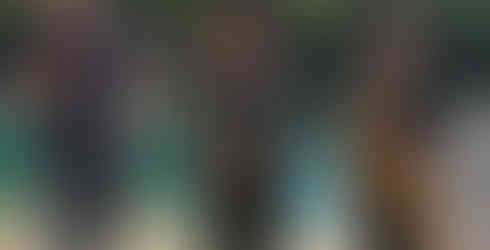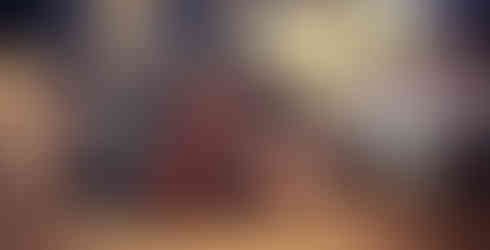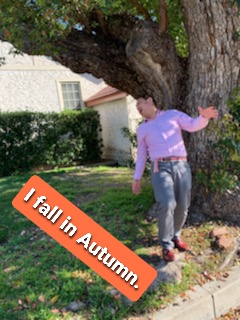
Role: Game Designer | Organization: My Party Guests?
"By adorning them with your own words, you will be able to reveal the true colors of your hearts."
—O Maidens in Your Savage Season, Mari Okada
While I don't particularly enjoy the small talk that comes with most parties, I enjoy creating activities for such events. One of those games is Photo Tag, which I designed for guests to play at my last birthday party before the world profoundly changed. It's a variation of tag that involves smartphone photography and concerns itself with the many meanings of images.
Background
Photo Tag was inspired by Color Tag, a variation of the classic playground game that helped characters of the series O Maidens in Your Savage Season, written by Mari Okada (bless her) sort out their confusing feelings and misunderstandings in the finale. In a game of Color Tag, "it" must describe an object of a specific color in their own words. If someone touches that object, they're safe from being tagged. Just like the game in the anime, color tag requires its players to dive deep into understanding how "it" thinks and feels. When I watched this moment in the anime, I thought, "How would this work with everyone's smartphone cameras?"
The Concept
Color Tag as a concept felt familiar to me. Academic papers from art history and media studies operate like games of color tag, but with many more "its," players, and so many colors. Folks within this discipline usually begin their research and writing after seeing or experiencing something in a work of art that no one else has. The creation of art is a lot like this too. Artists may have a conscious or subconscious vision for their art, but the public will always have a multiplicity of interpretations of that work that may align or detract from that vision.

These complex webs of creation and interpretation come from this: we are all trained to see things based on our own personal knowledge and beliefs. We create and interpret things based on our own lexicons. In my game, I wanted to explore this complexity in visual culture using an accessible tool for creating art — the smartphone.
Smartphone galleries and the images we curate for our social media accounts are semi-autobiographical. Whether consciously or subconsciously, we use smartphones to document our lives for ourselves and for the world to see. Everything about those images — not just their subject matter, but their styling, perspective, retouching, and much more — can tell us a lot about the phone's owner. In addition, the information gleaned from these galleries and images differ from viewer to viewer. This is the heart of Photo Tag.
This birthday party wasn't just about me. It was also about the people I'd invited to the party. These people are close friends and family, some of whom have known me my entire life. I wanted this game to give everyone an opportunity to celebrate their own creativity, to give folks a chance to share their smartphone photography without using a social media platform. Fun was also the name of the game.
Rules & Objectives
Before the game began, I instructed the party's 11 guests to divide themselves into teams of 3 or 4. I wanted to keep these groups small to prevent introverts, like myself, from feeling like background friends in an activity that requires each team member's creative input. It's easy to get lost in the background in much larger groups. It's also a very unpleasant feeling.
I then explained the game's objective and rules. Each team must take a picture for each photo "description" I wrote ahead of the party. These were plucked from random thoughts I jotted down in my phone's notepad app throughout the week leading up to the event:
1. I fall in autumn.
2. Lost in words.
3. We're after the same rainbow's end.
4. Remember me.
5. Do images speak?
6. Twinkle, twinkle
I posed the following questions to guests to loosely guide their photos: How attuned are you to the way I think? But more importantly, how will your images work together and in what unique ways will you interpret these words?
I initially thought of creating a scoring rubric to assess each team's set of photos according to the two questions above, but scrapped this idea. I didn't want to spend the majority of this party grading images, nor do I find the idea of winning and losing particularly interesting. I also do not want to be designated as this game's sole judge. While the first question above seems to imply that I was the sole judge and that only one photo will perfectly match each description, it does not. My guests know me through different contexts and would inevitably choose different things for each description as their answer to the first question. In addition, as mentioned before, since each individual is trained to see and create differently, I didn't expect each image to look exactly alike. Anticipating that the similarities and differences between all of these images would instigate fun discussions between guests, I instead told everyone that "judgment" would occur during a presentation by both me and all party guests. This would involve a slide deck with all of these photos, alongside photos I took of each description before the party.
I permitted teams to retouch their images using their own smartphone apps. However, images from online sources and pictures of me were not permitted. The first image type relies on the creativity of people not present at the party and removes folks from the action of taking a photo. The second image type is, frankly, just lazy. :/ Once the game officially commenced, I gave each team an hour and 45 minutes to take their photos wherever they would like, send me their photos via email, and return to my place. Since I wanted to be as far removed from the process as possible and see what people would come up with without my biases, I warned teams that asking me for help would result in a penalty. And that they shouldn't bother me since I'd be picking up everyone's lunch during that stretch of time.
Did the images speak?
Oh. They certainly did. In a fun, slightly chaotic way (which I think is the best way to have fun). The photos teams took collectively present divergent and similar approaches to the same words. (I also don't think I've ever laughed as hard as I did with others during the presentation.) Here are a few images with their respective descriptions.
Lost in words.
I fall into autumn.
What are you dreaming of?
Play Again?
Due to the limitless possibility of words and images, Photo Tag has the potential to be played again. As long as folks have a smartphone and things to take pictures of, it can be played. It's also something that can still be played in these socially distanced times.
If Photo Tag were to be played again today, I would explore democratizing the description writing process and giving others the opportunity to be "it." This distribution of roles is more closely aligned with how Color Tag, in which the role of "it" constantly changes, operates. A week before the game's presentation, each player could contribute one photo description for all other players to use as a guide. Throughout the week, players can take their photos based on those contributed photo descriptions. All of the photos could then be presented safely over group video chat.
Let chaos and laughter ensue.




























Comments